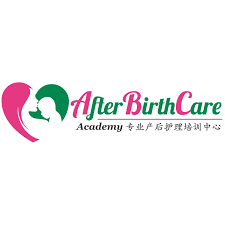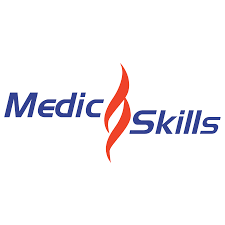Empowering Your Journey with the Support You Need
Professional Painless Lactation Massage Therapy
Our Services
Lactation Massage
Common Areas of Support: 1. Low milk supply 2. Engorgement 3. Blocked ducts/ Mastitis 4. Painful breastfeeding 5. Milk flow issues 6. Oversupply/Undersupply 7. Other lactation issues
Prenatal Support
Prenatal Support Services: 1. Benefits of breastfeeding education during pregnancy 2. Guidance on prenatal nutrition for breastfeeding support 3. Education on breast changes during pregnancy and their impact on breastfeeding 4. Addressing breastfeeding concerns during prenatal appointments 5. Prenatal breastfeeding classes or workshops preparation 6. Emotional support and encouragement for expectant parents 7. Collaboration with healthcare providers for comprehensive prenatal care
Postnatal Support
Postnatal Support Services: 1. Guiding breastfeeding initiation and achieving a proper latch postpartum 2. Assisting with challenges like engorgement, sore nipples, and low milk supply 3. Educating parents on breastfeeding positions and techniques 4. Supporting with managing breastfeeding discomfort and addressing concerns 5. Assisting with breast pumping and milk storage techniques 6. Offering emotional support and encouragement during the postpartum period 7. Addressing concerns about milk supply, infant feeding patterns, and weight gain 8. Providing information on breastfeeding milestones and infant feeding cues
Weaning Support
Weaning Support Services: 1. Information and guidance on the weaning process 2. Emotional support and reassurance for mothers during weaning 3. Addressing concerns or challenges related to weaning, such as engorgement or emotional adjustment 4. Providing strategies for transitioning to alternative feeding methods 5. Tips for managing discomfort or changes in milk supply during weaning 6. Support in decision-making about timing and method of weaning
Corporate Collaboration
Corporate Lactation Support: 1. Help for employees returning to work after maternity leave 2. Partnering with wellness programs for breastfeeding education 3. Workshops for HR on supporting breastfeeding staff 4. Setting up lactation rooms and policies 5. Promoting breastfeeding in corporate health initiatives 6. Virtual support for remote employees
Others
Some of the areas that we cover: 1. Provide anthropometric measurements for neonates 2. Provide Jaundice monitoring for neonates 3. Conduct mummy assessment, wound dressing and administration of s/c injection for postpartum mothers.
Testimonials
F.A.Q
What is lactation therapy?
How do I do booking?
How long is a session?
Are there any precautions or contraindications I should be aware of before receiving lactation massage?
Can you provide guidance on how partners or support persons can assist with lactation massage at home?
Do you offer any additional resources or support for breastfeeding beyond massage sessions?
Are there any self-massage techniques I can learn to continue the benefits of lactation massage between sessions?
What to expect from a lactation session?
1. Consultation and Intake
Our session begins with a consultation to understand your lactation related issues and health background. The therapist may ask about:
- Your medical and breastfeeding history, including any injuries or conditions.
- Your current issue and what have you tried to alleviate the problem
- Specific areas of discomfort or tension.
Before the session begins, you'll be asked to remove your top so that the therapist can examine your breasts.
3. Techniques and Pressure
Our therapists will use accupresure point massage and also vibration therapy to help you alleviate your issue. Hot/ cold pack and others will be used based on your condition.
4. Communication During the Session
Throughout the session, the therapist may check in with you to ensure the pressure is comfortable and you're at ease. Feel free to communicate any discomfort, request adjustments, or ask questions.
5. Duration of the Session
Massage sessions vary in length, typically ranging from 90minutes to 120 minutes, depending on your condition.
6. Post-Session Guidance
After the session, the therapist will provide take-home self care to provide you a guidance on what to do at home to reduce the occurrence of the same issue.
7. Follow-Up and Rebooking
Sometimes when the issue is too severe (eg too much clogged ducts), one session might not be enough to alleviate the issue. Our therapists will provide you some "homework" to do when you get home, and will monitor your progress via phonecalls and whatsapp in between the sessions.
What should I prepare before the session?
1. Try to empty your breast as much as possible before the session (Via latching/ pumping).
2. Wear a loose and comfortable top.
3. Eat something light before the session.
4. Prepare a list of questions that you have so that you will not miss out any questions during the session.
5. Bring along your breast pump + milk collectors so that you can pump right after the session.
How can lactation massage help with breastfeeding?
What are the benefits of lactation massage for both me and my baby?
Can lactation massage help with common breastfeeding challenges such as engorgement or blocked ducts?
Are there specific techniques or areas you focus on during lactation massage sessions?
How frequently should I consider receiving lactation massage to support breastfeeding?
Medical Nutrition Therapy for Mastitis/ Clogged Ducts
Foods to Avoid or Limit
- High-Sugar Foods: Foods with excessive added sugars can lead to inflammation and weaken the immune system. Limit sugary snacks, desserts, sweetened beverages, and highly processed foods.
- High-Fat Processed Foods: Foods high in trans fats and saturated fats can contribute to inflammation. Avoid processed snacks, fried foods, and commercially baked goods.
- Excessive Caffeine: While moderate caffeine intake is generally safe, excessive caffeine can contribute to dehydration, which is not ideal during mastitis. Limit coffee, energy drinks, and high-caffeine teas.
- Alcohol: Alcohol can weaken the immune system and may interact with medications prescribed for mastitis. It's best to avoid alcohol during treatment and recovery.
- Spicy Foods: Some people find that spicy foods can irritate the digestive system or exacerbate discomfort, although this is a personal preference. If spicy foods affect you, consider reducing them during mastitis.
- Whole Grains: Foods like whole wheat bread, oats, and brown rice provide sustained energy and essential nutrients without causing spikes in blood sugar.
- Fruits and Vegetables: A diet rich in fruits and vegetables can boost your immune system and provide antioxidants to combat inflammation. Aim for a variety of colors and types.
- Lean Proteins: Choose lean sources of protein, such as chicken, fish, tofu, or legumes, to support tissue repair and recovery.
- Healthy Fats: Include sources of healthy fats like avocados, nuts, seeds, and fatty fish (like salmon or mackerel). These fats can have anti-inflammatory properties.
- Probiotics: Foods with natural probiotics, like yogurt, kefir, sauerkraut, or kimchi, can support gut health and potentially aid in fighting infection.
- Hydration: Stay hydrated by drinking plenty of water and herbal teas. Proper hydration is crucial for maintaining milk production and supporting the body's natural healing processes.
- Rest and Self-Care: Adequate rest is essential for recovery. Take breaks, and ask for help from family or friends to reduce stress.
- Continue Breastfeeding: Despite the discomfort, continue breastfeeding or pumping to maintain milk flow and prevent further complications.
- Medical Treatment: If you suspect mastitis, seek medical treatment promptly. Antibiotics may be necessary, and your healthcare provider can offer additional guidance.
Credentials






Collaboration
Manna for the Day
Contact
- C-41-UG, Jalan C180/1, Dataran C180, 43200 Cheras, Selangor
Thank you for your message. We anticipate connecting with you shortly. Should you have any urgent matters, please feel free to contact us directly via our phone number. Thank you, and have a pleasant day.














